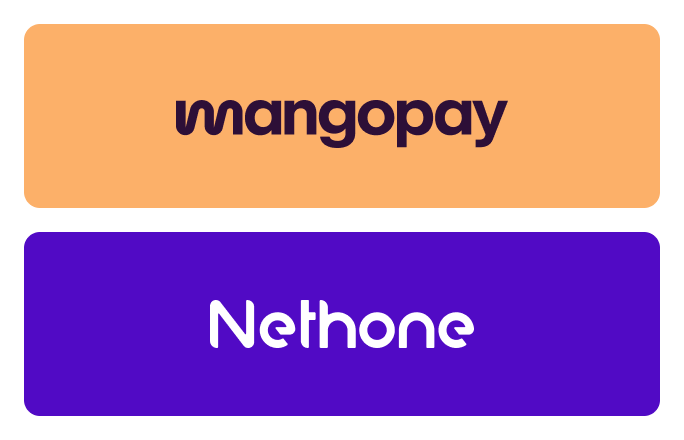What is the difference between e-commerce and marketplaces?
The multiplication of devices and access to broadband internet have changed the way companies operate and how consumers spend their cash: the option of ordering anything online in mere seconds, and sometimes without even taking out a wallet has resulted in e-commerce accounting for nearly 20 percent of retail sales worldwide in 2021, and according to forecasts, will make up close to a quarter of total global retail sales in 2025.
Even the more traditional activities such as B2B are making the shift to online and powering the new platform economy. In 2022, nearly two-thirds (65 percent) of B2B companies across industry sectors now offer e-commerce capabilities.
Almost everyone has at some point or other dealt with e-commerce, but it can get a bit hazy: for example, what is the difference between e-commerce and e-retail? What about marketplaces? Here are a few sure fire clues to help you navigate the complexities of the online commerce sector.
It’s all e-commerce
As its name indicates, e-commerce refers to commercial transactions that are conducted electronically on the internet. E-commerce enables companies and individuals to buy and sell goods and services online, be that via computers, tablets, smartphones and other smart devices.
However, the term is commonly used in reference to only the retail portion of the industry: in 2021, retail e-commerce sales amounted to approximately 4.9 trillion U.S. dollars worldwide. This figure is forecast to reach about 7.4 trillion dollars by 2025.
Electronic retailing
Electronic retailing, or e-tailing, is the process of selling retail goods and services online. It is first and foremost a business-to-consumer (B2C) activity.
There are two types of e-retailers: pure players and ‘brick and click’ e-retailers. Pure play e-retailers, like Rakuten, or La Redoute, only exist online, they have no physical outlet for shoppers, whereas brick and click e-retailers, like But, have both an online and offline presence.

Much like brick-and-mortar stores, e-retailers manage their own stocks, inventory and logistics, whether they rely on suppliers or sell their own brand-name products.
In this model, their clients are the end consumer, making payment flows relatively simple: once the consumer has finalized their purchase, the money is routed to the e-retailer to secure the transaction.
E-tailing allows traditional retailers to expand their customer base, by reaching a broader audience online. It also enables companies to save on overhead costs and wages connected to having a physical store.
What about marketplaces?
Online marketplaces are part of the e-commerce family, but unlike e-retailers, marketplaces do not sell their own products or services: they act as intermediaries that allow third parties to exchange products and services on their platforms. They exist only online and, as financial intermediaries, are subject to very specific regulations relative to anti-money laundering and terrorist financing laws.
To legally process payments on an EU-based marketplace, the easiest way is to use a Payment Service Provider (PSP) that has been approved by the banking authorities. In this setup, the PSP handles all marketplace payments, regardless of the payment method, once the transaction is completed, as well as the collection of the commission. Technically speaking, the sellers’ funds are deposited in an escrow account before being redistributed.
Marketplaces represent only 1.5% of e-commerce sites but generated 50% of global e-commerce sales in 2020. Gartner Predicts estimates they will account for 70% of e-commerce sales by 2022.
Marketplaces are incredibly versatile and are compatible with almost any business model. Generalist B2C marketplaces of course have a head start, but marketplaces are also proving to be the ideal outlet for second-hand sales, with C2C platforms like Vinted leading the way. Thanks to dedicated rules that take into account their complex workflows, even B2B platforms specialized in e-procurement or services are finding ways to make the platform model work for them.
Whatever the business model, for marketplaces, the client is always the seller, making onboarding sellers reliably and efficiently a crucial part of operating such a platform, and what will give it an edge in this highly competitive landscape. As an intermediary, marketplaces must also secure and route payments to their sellers in a timely manner: according to a 2018 Forrester study, 50% of sellers base their decision to join a marketplace on how fast they are paid following a sale.
Marketplaces enable businesses to tap into new online markets and increase their customer base while sparing them hefty digitalisation and processing costs incurred by launching their own e-commerce site. For consumers, marketplaces are a one-stop shopping experience, with numerous options and prices to match.
The rise of hybrid and integrated marketplaces
Initially, unlike e-retail platforms, marketplaces did not sell their own products or services. In recent years, however, certain marketplaces have also taken to offering their own range of products, like Showroomprive.com, which launched its ladies’ apparel brand in 2015, in addition to hosting online flash sales for third-party merchants.
Furthermore, in a bid to broaden their offer and meet the new needs and expectations of customers, traditional e-retailers and e-commerce players, like Boulanger, or La Redoute, are also opening marketplace platforms to host smaller merchants and even individuals, allowing them to leverage their platforms’ traffic and features. These are known as integrated marketplaces.
These new hybrid marketplaces that are tailored to consumer needs require equally customisable payment solutions to follow through on their promise. When an e-retail site also hosts third-party sellers on their platform, it has to consider two very different types of payment flows: those concerning its own activity, and those generated by independent sellers which will be subject to a commission.
The ability to communicate instantly and on a global scale has created endless and exciting opportunities to power online platforms of all types and sizes. We will no doubt continue to see the emergence of new forms of trade, new business models, and new terms to define them. Watch this space !



